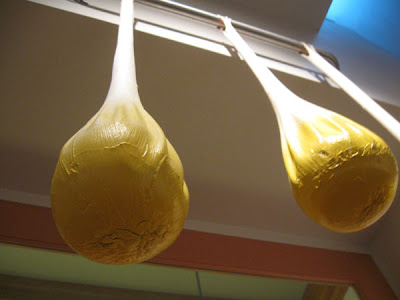
There's a good article and slideshow in the NY Times today concerning Bruno Schulz, the Polish Jew best known for his dreamlike, Kafkaesque short stories. He was also an accomplished draughtsman, who created eerie (and oftentimes somewhat grotesque) tableaux. His artistic talent forestalled (but ultimately did not prevent) his death at the hands on the Nazis when they occupied Poland. A Nazi officer, Felix Landau, initially kept him from being shot or forced into hard labor, so that Schulz could paint murals in a riding school and in a nursery for his children. But another Nazi officer, upset that Landau had had his Jewish dentist shot, killed Schulz in a perverse tit-for-tat, reportedly telling Landau: "You killed my Jew. Now I've killed yours."
The article details the exhibition of what remains of Schulz's murals, excised from their walls, and now preserved in a state of arrested decay. There are several small details of subversion in the paintings, tiny acts of mental freedom executed under duress.
I've admired Schulz's drawings and prints for some time, and especially cherish his short stories, published in the US in the two collections "Street of Crocodiles" and "Sanatorium Under the Sign of the Hourglass." They are incredibly dense, poetic works which take you deep into the subjective realities of a sensitive, observant mind. I can't recommend them highly enough.
"Street of Crocodiles" was used as a jumping-off point for the great stop-motion animated short of the same name, created by the brothers Quay. I showed it last year in my animation class. There's more on Schulz and the Quays here.
















































